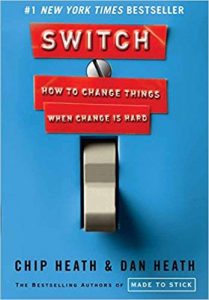Last week in Part 1 of this blog topic, we explored the correlation between happiness and success. This week I’ll share a few tips to help you manage your emotions and keep your focus on the things that will bring you greater happiness and joy.
Keep reading to gain tips on how to shift your mindset and manage your emotions.
3 Tips to Shift Your Mindset & Manage Your Emotions
1. Remember that what other people think of you is none of your business.
 Since your mindset and emotions play such a major role in your happiness, it’s important to remember that you actually have control over the emotions you feel. You cannot manage someone else’s thoughts. You can manage your own thoughts — your mindset. When you manage your thoughts, you manage your emotions since your feelings are informed by your thoughts.
Since your mindset and emotions play such a major role in your happiness, it’s important to remember that you actually have control over the emotions you feel. You cannot manage someone else’s thoughts. You can manage your own thoughts — your mindset. When you manage your thoughts, you manage your emotions since your feelings are informed by your thoughts.
If other people say or do something that upsets you, you can let go of the feeling (anger, frustration, hurt, etc.) that you associate with what someone else said or did by thinking different thoughts.
It’s not what someone else says or does, but rather what you think about what they say or do, that creates the emotions you experience. Choose your thoughts and your thoughts will affect the way you feel.
Here’s a great example of how your thoughts inform your feelings…
You’re driving somewhere and another car abruptly cuts in front of you. Although you know nothing about the other driver, you think to yourself “What a rude and inconsiderate jerk! What gives him the right to think he’s better than me?” How does that make you feel? Angry perhaps?
Now, take the same scenario — you’re driving somewhere and another car abruptly cuts in front of you — and this time you choose a different thought: “Perhaps my car was in his blind spot and he didn’t see me here.” Does that thought elicit different feelings? You may feel compassion or empathy, as you recall a time in the past when you did the same thing to someone else when another car was in your blind spot.
2. Let go of fear and worry.
 If you are consumed by fear and worry, keep a daily Worry Log — a place to write down all of your worries and fears before you go to bed each night, including a date next to each entry. Once you’ve written them down, do your best to let go of them.
If you are consumed by fear and worry, keep a daily Worry Log — a place to write down all of your worries and fears before you go to bed each night, including a date next to each entry. Once you’ve written them down, do your best to let go of them.
Check back a month later to see what percentage of your worries and fears actually came true from the previous month. Do this for several months.
Over time, you’ll notice that most of your worries never came to fruition. Perhaps this reality check will enable you to spend less energy and thought on your worries and fears.
3. Remember that the past and the future don’t exist in the present.
 How often do you allow the past and the future to rule your life in the present? Rather than trying to get TO somewhere or get FROM somewhere, commit to living IN the present.
How often do you allow the past and the future to rule your life in the present? Rather than trying to get TO somewhere or get FROM somewhere, commit to living IN the present.
The past cannot be changed, and the future can only be affected by what we do in the present.
“Yesterday is history, tomorrow is a mystery, today is God’s gift, and that’s why we call it the present.” -Joan Rivers
Focus on Solutions When Seeking Happiness
Most people focus on problems rather than solutions, so they just get more of what they don’t want! This creates a negative mindset. The brain cannot focus on identifying solutions when it is focused on a problem since it can only focus on one thing at a time.
 The book: Switch: How to Change Things When Change Is Hard, by Chip and Dan Heath, mentions a concept from Solutions Focused Brief Therapy dating back to the 1980’s, called “the miracle question.” This technique has applications for everyone, because all of us have problems or challenges in our lives – something that we wish were different than it is right now. With this technique, one focuses on solutions rather than problems. Here’s a quote from the book that describes how it works:
The book: Switch: How to Change Things When Change Is Hard, by Chip and Dan Heath, mentions a concept from Solutions Focused Brief Therapy dating back to the 1980’s, called “the miracle question.” This technique has applications for everyone, because all of us have problems or challenges in our lives – something that we wish were different than it is right now. With this technique, one focuses on solutions rather than problems. Here’s a quote from the book that describes how it works:
“Suppose that you go to bed tonight and sleep well. Sometime, in the middle of the night, while you are sleeping, a miracle happens and all of the concerns that you’re facing right now are resolved. When you wake up in the morning, what is the first small sign you’d see that would make you think, ‘Well, something must have happened — the concerns are gone!’?”
The emphasis here is in the “first small sign,” not on the solution itself. The “miracle question” reminds us that people suffer when they put their attention on what they DON’T want. This technique provides a way to get you focused on what you DO want.
What is a “first small sign” of progress you will find when you focus your attention on what brings you happiness?
If you’d like a fresh perspective– someone to help you clarify what makes you happy and shift your mindset create the success you desire—let’s schedule a no-cost, no-pressure Discovery Call today.
Additional Resources:
- Blog: The Special “Secret Sauce” to Success
- Blog: Is Negativity Running Your Life?
- Blog: Manage Your Emotions
- Guide: Cultivating Happiness: Living Life on Your Terms
- Guide: Living with Purpose











Wonderful blog Kathy! Thanks for the inspiration!